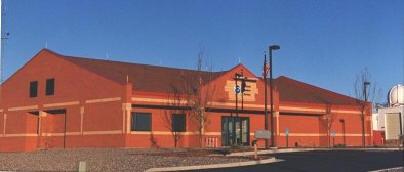
Two storm systems will track through the central and eastern U.S. through this weekend with areas of gusty winds, rain, and heavy snow. Severe thunderstorms are forecast Friday from the central Gulf Coast into parts of the lower Mississippi, Tennessee and Ohio Valleys. Heavy to excessive rainfall is forecast from the lower Mississippi River Valley to the Tennessee Valley which may bring flooding. Read More >

Weather observations from Grand Junction began shortly after the city was first established in the early 1880s. Old records indicate that sporadic observations were recorded from April, 1884 through April, 1888. Exact locations are uncertain, but they were generally taken at the homes or offices of either Frank MacClintock or L.F. Ingersoll. Subsequently, no observations have been found from the late 1880s and early 1890s.
In March, 1892, a cooperative observation program was established with Dr. S.M. Bradbury as the first observer. These weather observations were taken from his office on the upstairs floor at 520 Main Street and continued through December, 1898.
Upper air soundings (RAOBS) were also started during this period. The U.S. Army began this in May, 1944, and the Weather Bureau took over on October 1, 1944. This created some difficulty, as the upper air program was conducted at the airport while the Weather Bureau office was downtown for several months before the office move.
Brenda Brock was the first Meteorologist-in-Charge (MIC) of the now National Weather Service (NWS) Office. She remained from November, 1989 to December, 1990. Ms. Brock was followed by Douglas Crowley (January, 1991 - April, 1993) and Robert W. Jacobson Jr. (November, 1993 - May, 2000).
Douglas Crowley returned to Grand Junction in October 2000 and remained as the Meteorologist-in-Charge until retiring in June 2012. In early October 2012, Benjamin Moyer took over the office, becoming the 5th Meterorologist-in-Charge since 1989.
The 1990's saw the implementation of a national NWS modernization program. In Grand Junction, this began in earnest in the fall of 1994 with the hiring of an administrative assistant. Modernization continued through the fall of 1995 with the addition of 5 weather forecasters. In April 1996, human observations, which had been done since the office's beginning, were replaced by an Automated Surface Observing System ( ASOS ). In June, 1996, a WSR-88D Doppler Weather Radar located on top of the Grand Mesa, the first dedicated weather radar on the west slope of Colorado, was commissioned.
The Grand Junction NWS Office now consists of a staff of 25 meteorologists and support personnel who serve the people of western Colorado and eastern Utah.
